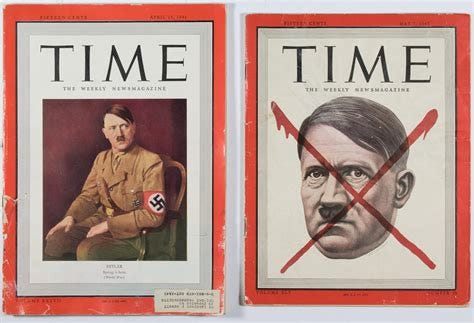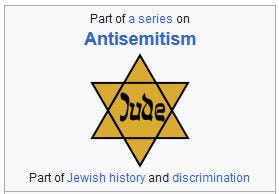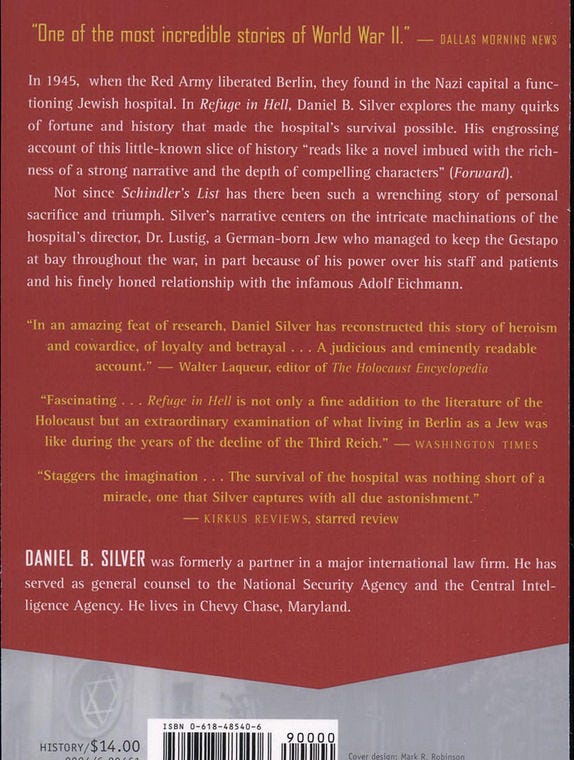The Island of Doubt: Denial of Narratives Vs Narratives of Denial
Stories We Tell Ourselves or Stories We Are Ourselves, Part Six
“We assent to narratives, as we do to people, to the degree that we grow to feel we can trust them.” ~ Gabriel Josipovici, The Book of God
The essential thing for cognitive warfare is to always impose a narrative in lieu of allowing facts (and most importantly, experience) to speak for themselves.
The Holocaust™ is a fiction because all stories are fictions. Likewise with Holocaust Denial™—as soon as it becomes a story and not merely a challenge to an existing story, it possesses whoever is telling the story, and forces them to keep telling it.
Our mistake, perhaps, is to believe we can only combat and counteract false narratives with new narratives. Facts are never enough because facts don’t ever do what we want them to.
Narratives force facts to get in line.
Those who are compelled to create new narratives to counter old ones become imprisoned by both the old and the new. Holocaust deniers generally wind up as obsessed with the Holocaust™ as Holocaust affirmers. (Understandably, since they risk their freedom in their attempt to set the historical record straight.)
Cognitive hijack is when interpretation supersedes perception; facts supersede interpretation; and narrative supersedes facts. The legend gets tattooed upon our skins. We become camp inmates, either to be worked to death, or to be suffocated by toxic gaslighting.
This week’s post is longer than usual. It is heavy on facts and facts take time to expound. Bear with me as we near the end of this particular coal mine. If it seems a little dry or dull, just pretend I am writing this as an appeal to the ADL, from the inside of an Israeli jail cell.
Facts All Come with Points of View
“Only a flea’s hop separates the claim of Holocaust uniqueness from the claim that The Holocaust cannot be rationally apprehended. If The Holocaust is unprecedented in history, it must stand above and hence cannot be grasped by history. Indeed, The Holocaust is unique because it is inexplicable, and it is inexplicable because it is unique. . . . Rationally comprehending The Holocaust amounts, in this view, to denying it. For rationality denies The Holocaust’s uniqueness and mystery.” ~ Norman Finkelstein, The Holocaust Industry (p. 44-45)
As Josipovici writes in The Book of God, the way to “force us to enter the world of the narrative” is not by “excess of detail but by forcing apparent contradictions upon us and yet giving us the confidence that this and no other way was how it was” (p. 230, emphasis added).
This is a rule of fiction, but it also applies to factual narratives; or rather, it is a rule of fiction because any reliable factual narrative is, and must always be, rife with contradictions. This is because there is no way to include every dot to create a comprehensible image (comprehensible is never comprehensive).
The problem—the downfall—of the Holocaust narrative is that it insists on being comprehensive and so cannot admit to its internal contradictions. Holocaust denial points out those contradictions—and more importantly, the attempt to conceal them by simplification—but in the process, it potentially gives rise to its own set of contradictory simplifications, or fictional devices.
Narratives exist to make sense of our experience, to make mere data coherent. And human cognition needs sense the way fish need water.
Researching an established historical narrative like the Holocaust™ to see how it holds up to scrutiny involves two angles of approach:
1) Checking the evidential body behind the narrative to see if it is accurate
2) Looking for counter-evidence that refutes the narrative
In the process of this rearrangement of evidence, it is more than merely tempting to assemble a new narrative—it is unavoidable. The main thing, then, is to avoid, as much as possible, premature narrative-building, out of a desire to “win the argument”—including, or especially, the one in our own minds.
The desire to reduce cognitive dissonance, as it increases in the face of two contradicting versions of reality/truth, can certainly be overwhelming. We want to make sense of the new evidence as quickly as we can, to escape the gravitational pull—the spell—of the old narrative, which is constantly trying to pull us back in (even though we can no longer quite believe in it).
The counter-narrative to the Holocaust narrative is the narrative of Holocaust Denial. Denying the Holocaust narrative then becomes the Holocaust Denial narrative.
The main elements of the HD narrative are roughly as follows:
1. There was no planned extermination of the Jews.
2. There were no gas chambers.
3. Six million Jews did not die in World War Two.
4. Jews were treated reasonably well in the internment camps.
5. The Nazis had an open alliance with Zionists.
6. Jewish elements within Germany were openly declaring war on the government (attempting to take over the country).
7. Allied wartime propaganda besmirching the Nazis continued after the war, including the Nuremberg trial.
8. Rumors of gas chambers started during the war, possibly as a result of Allies propaganda, and many camp survivors believed them during and after their release.
9. Many of the testimonials of Jewish survivors were either intentionally fabricated (as a means to receive compensation payments) or unintentionally exaggerated (due to believing the rumors).
10. Nazis who were tried after the war were tortured to give false confessions, and any documentation pointing to a Nazi extermination plan is either forged or coerced.
11. The Holocaust narrative has served various geopolitical interests since the end of the war, not least of which those of Israel and Zionism.
That’s the narrative in its main points. Now what about the facts?
A Few Dangerous Facts
“Articulating the key Holocaust dogmas, much of the literature on Hitler’s Final Solution is worthless as scholarship. Indeed, the field of Holocaust studies is replete with nonsense, if not sheer fraud.” ~ Norman Finkelstein, The Holocaust Industry (p. 55)
The following facts are not, I trust, dangerous to me personally, since they are “established” to the point that even Wikipedia will allow you to know about (most of) them. Ergo, they do not in themselves constitute any kind of Holocaust Denial.™
An observant reader may have noted that the supposedly “objective,” “non-partisan” Wikipedia has this badge at any page it deems a worthy addition to its “series” (including the page on Red Ice!):
I don’t know how many other such series there are on Wiki, but I suspect it is not many. (“Conspiracy Theory,” for example, does not have its own series.) The purpose of this badge appears to be as a means to frame any and all facts within the parameters of a ruling narrative, in this case, Anti-Semitism™. By the reckoning of Wikipedia, Holocaust Denial™ (and even Red Ice) can best—perhaps only—be understood within the context of Anti-Semitism™.
Two can play at this game.
“I’m ready to leave, I push the facts in front of me/Facts lost, facts are never what they seem to be/Nothing there, no information left of any kind/Lifting my head, looking for the danger signs.” ~Talking Heads, “Cross-Eyed and Painless”
The following facts can also be placed within a series on storytelling and Holocaust Denial™ (a series that, unlike Wikipedia, is not pretending to be an impartial information source). By such re-contextualization, otherwise innocuous facts might be rendered “dangerous” to anyone who experiences strong anxiety around the idea of questioning the Holocaust narrative. So here goes.
· The Holocaust narrative as we know it today did not really take shape, or hold, until the 1960s or even the 1970s (See Ron Unz’s “American Pravda,” “Explicit and Implicit Holocaust Denial After World War II”).
· Many early (massive) books on World War Two, such as General Eisenhower’s Crusade in Europe, Winston Churchill’s The Second World War, and the Mémoires de guerre of General de Gaulle), apparently (I have not read them) make no mention either of Nazi gas chambers, a planned extermination of the Jews, or of six million Jewish victims of the war. The Holocaust and the Historians, by Lucy S. Dawidowicz (a leading Holocaust scholar), accused many prominent historians of ignoring the reality of the Holocaust for many years following World War II.
· Berlin’s Hospital of the Jewish Community tended to Jews throughout the War, as recounted in (ex-CIA/NSA general counsel) Daniel B. Silver’s Refuge in Hell: How Berlin’s Jewish Hospital Outlasted the Nazis (2003). The book is available on Amazon, but does not appear on Wikipedia. The back blurb reads, “Not since Schindler’s List has there been such a wrenching story of personal sacrifice and triumph.” The preface of the book acknowledges the improbability of its own storyline thus: “All agreed that it was a miracle, but no one had a coherent explanation to offer” (p. x).
· Documents of Destruction: Germany and Jewry 1933-1945 (1971), edited with commentary by (leading Holocaust historian) Raul Hilberg, reproduces a 1944 German document, in English, stating that the Council of Elders of the Jews in Vienna was responsible during the war for Jewish hospitals, a children’s home and day school, a community kitchen, a bathhouse, a poor people’s home, an old people’s home, a clothes and furniture depot, a library, and other buildings, spread out at different points in the city (p. 127). On page 128, it reports a 1944 Allied bombing raid that crippled the children’s hospital, after which a new emergency hospital was set up overnight, authorized by the Secret State Police (Gestapo).
(Over the Paywall: More Awkward Facts about the Holocaust,™ + Wikipedia’s case for the Holocaust™ ~ in the Nazis’ own words (Himmler, Goebbels, Eichmann).







